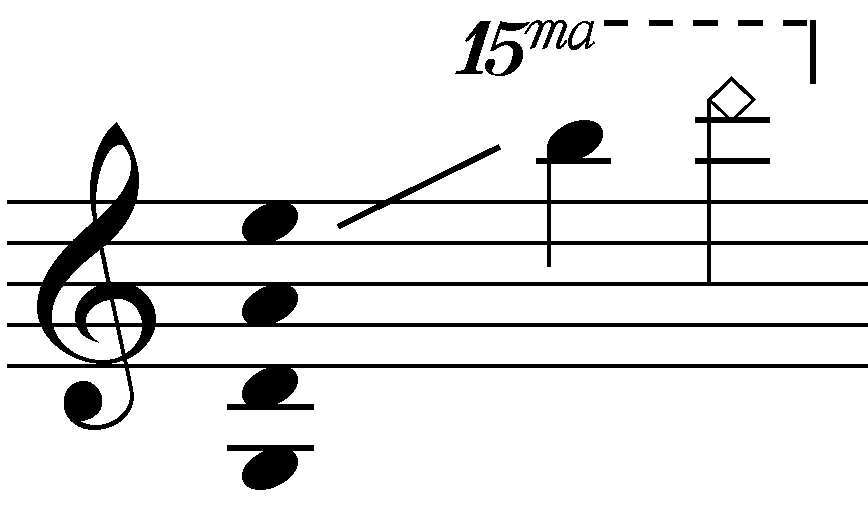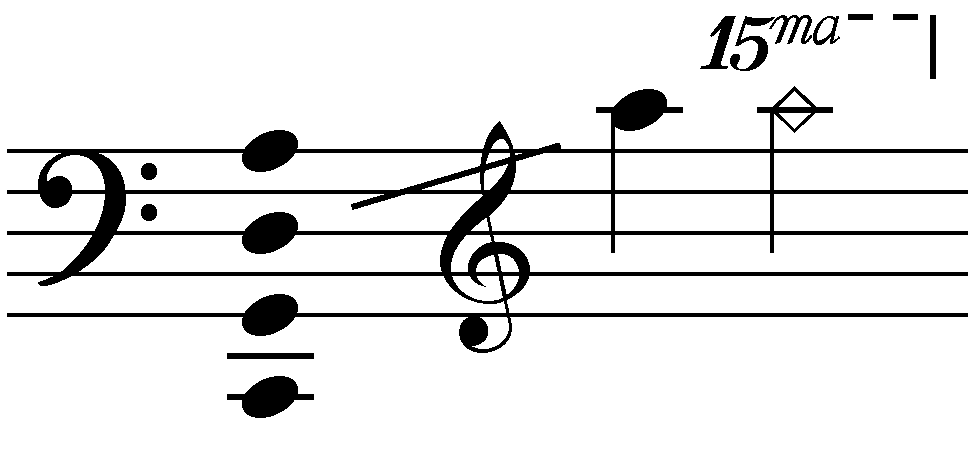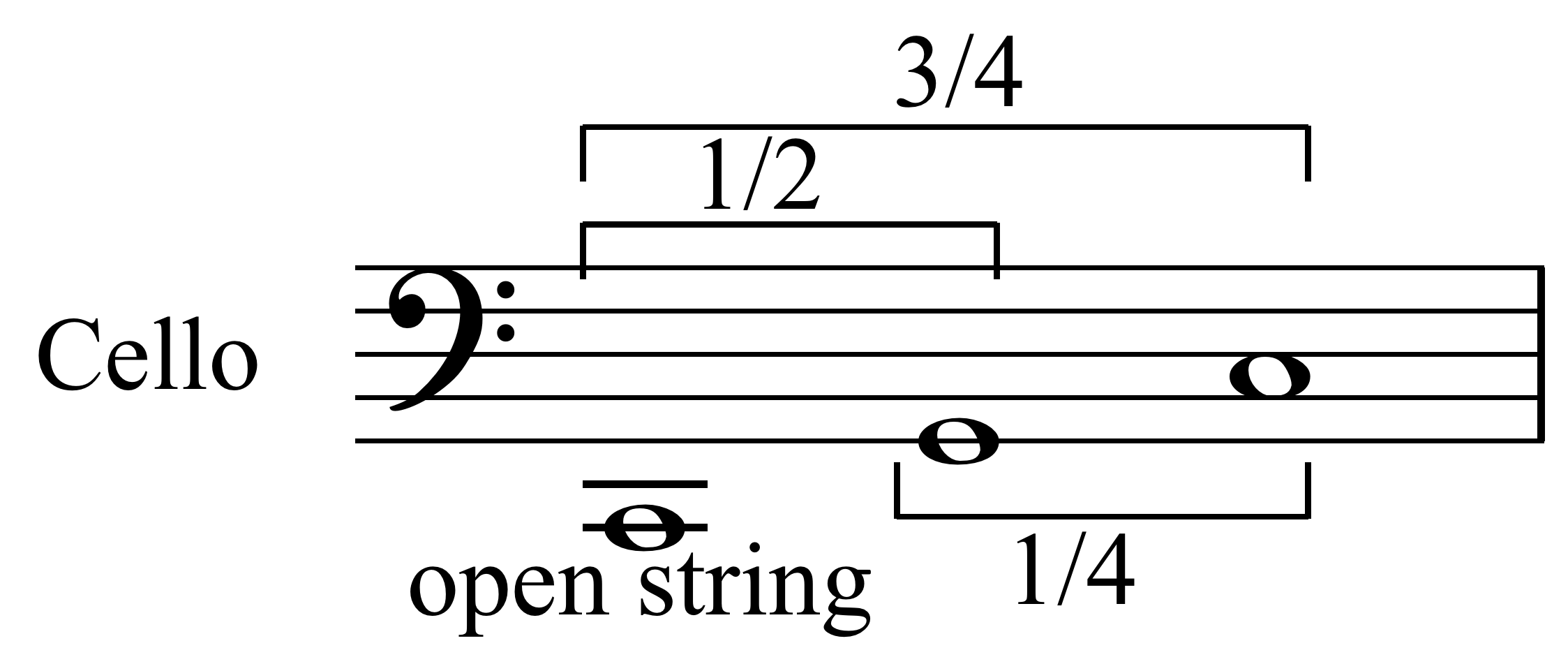|
Viol
The viola da gamba (), or viol, or informally gamba, is a bowed and fretted string instrument that is played (i.e. "on the leg"). It is distinct from the later violin family, violin, or ; and it is any one of the earlier viol family of bow (music), bowed, fretted, and stringed instruments , stringed instruments with hollow wooden bodies and Tuning mechanisms for stringed instruments, pegboxes where the tension on the strings can be increased or decreased to adjust the pitch of each of the strings. Although treble, tenor and bass were most commonly used, viols came in different sizes, including (high treble, developed in 18th century), treble, alto, small tenor, tenor, bass and contrabass (called ). These members of the viol family are distinguished from later bowed string instruments, such as the violin family, by both appearance and orientation when played—as typically the neck is oriented upwards and the rounded bottom downwards to settle on the lap or between the knees. ... [...More Info...] [...Related Items...] OR: [Wikipedia] [Google] [Baidu] |
Violin
The violin, sometimes referred to as a fiddle, is a wooden chordophone, and is the smallest, and thus highest-pitched instrument (soprano) in regular use in the violin family. Smaller violin-type instruments exist, including the violino piccolo and the pochette (musical instrument), pochette, but these are virtually unused. Most violins have a hollow wooden body, and commonly have four strings (music), strings (sometimes five-string violin, five), usually tuned in perfect fifths with notes G3, D4, A4, E5, and are most commonly played by drawing a bow (music), bow across the strings. The violin can also be played by plucking the strings with the fingers (pizzicato) and, in specialized cases, by striking the strings with the wooden side of the bow (col legno). Violins are important instruments in a wide variety of musical genres. They are most prominent in the Western classical music, Western classical tradition, both in ensembles (from chamber music to orchestras) and as solo ... [...More Info...] [...Related Items...] OR: [Wikipedia] [Google] [Baidu] |
Violone
The term violone (; literally 'large viol', being the augmentative suffix) can refer to several distinct large, bowed musical instruments which belong to either the viol or violin family. The violone is sometimes a fretted instrument, and may have six, five, four, or even only three strings. The violone is also not always a contrabass instrument. In modern parlance, one usually tries to clarify the 'type' of violone by adding a qualifier based on the tuning (such as "G violone" or "D violone") or on geography (such as "Viennese violone"), or by using other terms that have a more precise connotation (such as "bass violin", "violoncello", or "bass viol"). The term violone may be used correctly to describe many different instruments, yet distinguishing among these types can be difficult, especially for those not familiar with the historical instruments of the viol and violin families and their respective variations in tuning. Usage In modern usage, the term most often refers to ... [...More Info...] [...Related Items...] OR: [Wikipedia] [Google] [Baidu] |
Cello
The violoncello ( , ), commonly abbreviated as cello ( ), is a middle pitched bowed (sometimes pizzicato, plucked and occasionally col legno, hit) string instrument of the violin family. Its four strings are usually intonation (music), tuned in perfect fifths: from low to high, scientific pitch notation, C2, G2, D3 and A3. The viola's four strings are each an octave higher. Music for the cello is generally written in the bass clef; the tenor clef and treble clef are used for higher-range passages. Played by a ''List of cellists, cellist'' or ''violoncellist'', it enjoys a large solo repertoire Cello sonata, with and List of solo cello pieces, without accompaniment, as well as numerous cello concerto, concerti. As a solo instrument, the cello uses its whole range, from bass to soprano, and in chamber music, such as string quartets and the orchestra's string section, it often plays the bass part, where it may be reinforced an octave lower by the double basses. Figured bass music ... [...More Info...] [...Related Items...] OR: [Wikipedia] [Google] [Baidu] |
Violin Family
The violin family of musical instruments was developed in Italy in the 16th century. At the time the name of this family of instruments was viole da braccio which was used to distinguish them from the viol family (viole ''da gamba''). The standard modern violin family consists of the violin, viola, cello, and (possibly) double bass. Instrument names in the violin family are all derived from the root ''viola'', which is a derivative of the Medieval Latin word ''vitula'' (meaning "stringed instrument"). A ''violin'' is a "little viola", a ''violone'' is a "big viola" or a bass violin, and a ''violoncello'' (often abbreviated ''cello'') is a "small violone" (or literally, a "small big viola"). (The '' violone'' is not part of the modern violin family; its place is taken by the modern double bass, an instrument with a mix of violin and viol characteristics.) Background The instruments of the violin family may be descended in part from the lira da braccio and the medieval Byzan ... [...More Info...] [...Related Items...] OR: [Wikipedia] [Google] [Baidu] |
Viola Da Braccio
Viola da braccio (from Italian "arm viola", plural ''viole da braccio'') is a term variously applied during the baroque period to instruments of the violin family, in distinction to the viola da gamba ("leg viola") and the viol family to which the latter belongs. At first "''da braccio''" seems to encompass the entire violin family. Monteverdi's '' Orfeo'' (printed 1609) designates an entire six-part string section "''viole da brazzo''", apparently including bass instruments held between the knees like the cello and bass violin. His '' Selva morale'' (1641) contains a piece calling for "''due violini & 3 viole da brazzo ouero 3 Tronboni''" (2 violins & 3 viole da braccio or trombones), reflecting a general shift in meaning towards the lower instruments. Eventually it came to be reserved for the alto member, the viola. A famous example is Bach's Sixth Brandenburg Concerto (1721), combining two viole da braccio with two viole da gamba. The German word for viola, ''Bratsche'', i ... [...More Info...] [...Related Items...] OR: [Wikipedia] [Google] [Baidu] |
Chordophone
In musical instrument classification, string instruments, or chordophones, are musical instruments that produce sound from vibrating strings when a performer strums, plucks, strikes or sounds the strings in varying manners. Musicians play some string instruments, like Guitar, guitars, by plucking the String (music), strings with their fingers or a plectrum, plectrum (pick), and others by hitting the strings with a light wooden hammer or by rubbing the strings with a bow (music), bow, like Violin, violins. In some keyboard (music), keyboard instruments, such as the harpsichord, the musician presses a key that plucks the string. Other musical instruments generate sound by striking the string. With bowed instruments, the player pulls a rosined horsehair bow across the strings, causing them to vibrate. With a hurdy-gurdy, the musician cranks a wheel whose rosined edge touches the strings. Bowed instruments include the string section instruments of the orchestra in Western classic ... [...More Info...] [...Related Items...] OR: [Wikipedia] [Google] [Baidu] |
Stringed Instruments
In musical instrument classification, string instruments, or chordophones, are musical instruments that produce sound from vibrating strings when a performer strums, plucks, strikes or sounds the strings in varying manners. Musicians play some string instruments, like guitars, by plucking the strings with their fingers or a plectrum (pick), and others by hitting the strings with a light wooden hammer or by rubbing the strings with a bow, like violins. In some keyboard instruments, such as the harpsichord, the musician presses a key that plucks the string. Other musical instruments generate sound by striking the string. With bowed instruments, the player pulls a rosined horsehair bow across the strings, causing them to vibrate. With a hurdy-gurdy, the musician cranks a wheel whose rosined edge touches the strings. Bowed instruments include the string section instruments of the orchestra in Western classical music (violin, viola, cello and double bass) and a number of oth ... [...More Info...] [...Related Items...] OR: [Wikipedia] [Google] [Baidu] |
Bow (music)
In music, a bow () is a tensioned stick which has hair (usually horse-tail hair) coated in rosin (to facilitate friction) affixed to it. It is moved across some part (generally some type of strings) of a musical instrument to cause vibration, which the instrument emits as sound. The vast majority of bows are used with string instruments, such as the violin, viola, cello, and bass, although some bows are used with musical saws and other bowed idiophones. Materials and manufacture A bow consists of a specially shaped stick with other material forming a ribbon stretched between its ends, which is used to stroke the string and create sound. Different musical cultures have adopted various designs for the bow. For instance, in some bows a single cord is stretched between the ends of the stick. In the Western tradition of bow making—bows for the instruments of the violin and viol families—a hank of horsehair is normally employed. The manufacture of bows is considered a demandi ... [...More Info...] [...Related Items...] OR: [Wikipedia] [Google] [Baidu] |
Pardessus De Viole
The pardessus de viole is the highest-pitched member of the viol family of instruments. It is a bowed string instrument, bowed string instrument with either five or six strings and a fretted neck. The pardessus first appeared in the early 18th century, and was commonly played by women, particularly in French-speaking countries. Description The pardessus de viole is the smallest of the viol family. Its size is similar to the violin's, and its range is correspondingly similar. The strings are made of catgut, gut (like on any bowed string instrument until the 1970s) and the top string was tuned to g'', a fourth higher than the top string of the treble viol. Like the treble viol, the pardessus de viole was almost never used to play accompaniment chords, but was always a melody instrument. When played, it is played upright on the lap with a bow. Unlike the treble viol and other viol instruments, the pardessus usually has only five strings. The five string pardessus is tuned in fifths ... [...More Info...] [...Related Items...] OR: [Wikipedia] [Google] [Baidu] |
Tuning Mechanisms For Stringed Instruments
A variety of methods are used to Musical tuning, tune different String instrument, stringed instruments. Most change the Pitch (music), pitch produced when the string is played by adjusting the Tension (physics), tension of the Vibrating string, strings. A tuning peg in a #Pegbox, pegbox is perhaps the most common system. A peg has a grip or knob on it to allow it to be turned. A tuning pin is a tuning peg with a detachable grip, called a tuning lever. The socket on the tuning lever fits over the pin and allows it to be turned. Tuning pins are used on instruments where there is no space for a knob on each string, such as pianos and harps. Turning the peg or pin tightens or loosens the string. Some tuning pegs and pins are tapered, some threaded. Some tuning pegs are ornamented with Exoskeleton, shell, metal, or plastic inlays, beads (pips) or rings. Other tuning systems include screw-and-lever tuners, geared tuners, and the konso friction tuning system (using braided leather r ... [...More Info...] [...Related Items...] OR: [Wikipedia] [Google] [Baidu] |
Vihuela
The vihuela () is a 15th-century fretted plucked Spanish string instrument, shaped like a guitar (figure-of-eight form offering strength and portability) but tuned like a lute. It was used in 15th- and 16th-century Spain as the equivalent of the lute in Italy and has a large resultant repertory. There were usually five or six doubled strings. A bowed version, the vihuela de arco (arco meaning bow), was conceived in Spain and made in Italy from 1480. One consequence was the phrase vihuela de mano being thereafter applied to the original plucked instrument. The term ''vihuela'' became "viola" in Italian ("viole" in Fr.; "viol" in Eng.), and the bowed vihuela de arco was to serve as a prototype in the hands of the Italian craftsmen for the "viol, da gamba" family of fretted bowed string instruments, as developed starting in 1480. Their vihuela-inherited frets made these easier to play in tune than the rebec family (precursors of the "Lira da braccio, da braccio" family), and so th ... [...More Info...] [...Related Items...] OR: [Wikipedia] [Google] [Baidu] |









